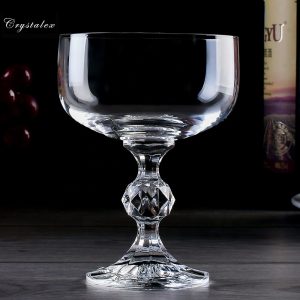The evolution of glassware spans thousands of years and reflects advancements in technology, craftsmanship, artistic expression, and changing cultural preferences. Here is an overview of the key stages in the evolution of glassware:
1. Ancient Origins:
- The earliest evidence of glassmaking dates back to around 3500 BCE in Mesopotamia (modern-day Iraq). Initially, glass was created by melting naturally occurring materials, like sand and plant ash, at high temperatures.
- Ancient Egyptians also practiced glassmaking, creating small vessels and decorative beads. The technique of glassblowing was developed in the Hellenistic period, around the 1st century BCE, revolutionizing glass production.
2. Roman Influence:
- The Roman Empire played a significant role in the spread of glassmaking techniques across Europe. Roman glassware included a wide range of vessels, from everyday containers to ornate decorative pieces.
3. Medieval Period:
- The fall of the Roman Empire led to a decline in glassmaking in Europe. However, the technique was preserved in the Byzantine Empire and the Islamic world, where glassmakers further refined their skills.
4. Renaissance and Venetian Glass:
- The Renaissance marked a resurgence in European glassmaking. Venice became a prominent center for glass production due to its skilled artisans and advanced techniques.
- Venetian glassmakers developed new methods for creating clear, colorless glass, as well as intricate glasswork with enameling, gilding, and filigree.
5. Industrial Revolution:
- The 19th century saw significant developments in glassmaking due to the Industrial Revolution. Innovations in manufacturing techniques, such as the invention of the glass press and the automatic bottle-making machine, led to the mass production of glassware.
6. Art Nouveau and Art Deco Movements:
- In the late 19th and early 20th centuries, glassware design was heavily influenced by artistic movements like Art Nouveau and Art Deco. Glassmakers began to prioritize creative and unique designs, often incorporating flowing lines and intricate patterns.
7. Studio Glass Movement:
- In the mid-20th century, artists and glass enthusiasts initiated the Studio Glass Movement. Pioneered by artists like Harvey Littleton and Dale Chihuly, this movement focused on individual craftsmanship and artistic expression in glass.
8. Contemporary Design and Techniques:
- Today, glassware design is influenced by a wide range of styles, from traditional to modern and minimalist. Artists and designers experiment with various techniques, such as fusing, slumping, casting, and kiln-forming, to create unique pieces.
9. Technological Advancements:
- Technological advancements have expanded the possibilities for glassware design. Modern glassmakers can manipulate glass at the molecular level, creating innovative textures, shapes, and even “smart glass” that changes opacity with the application of an electric current.
10. Sustainability and Green Glassware:
- With growing environmental awareness, there is a trend toward sustainable glass production using recycled materials and energy-efficient techniques. Green glassware combines artistic creativity with eco-consciousness.
The evolution of glassware is a testament to human creativity, innovation, and adaptability. From its humble beginnings as practical vessels to its role as both functional and artistic objects, glassware continues to capture our imagination and enhance our lives in various ways.
















